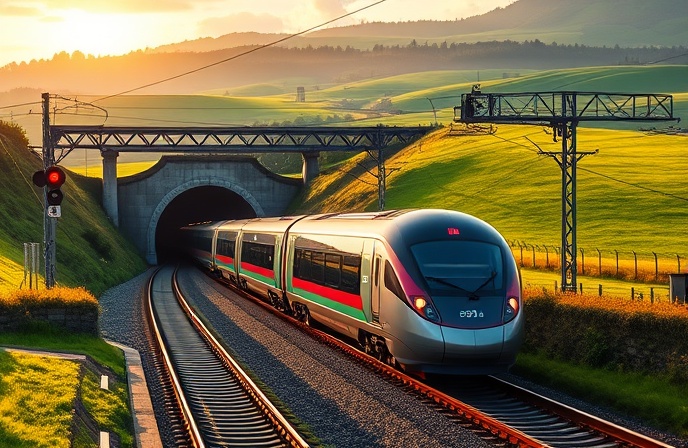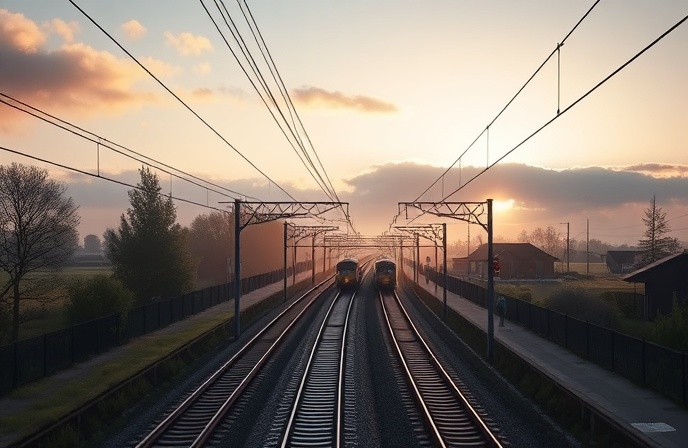Rail Baltica: Estonian Launch, Challenges, and Future

This article delves into the complexities of the Rail Baltica project, a high-speed rail line intended to connect the Baltic states with Western Europe. The project, while ambitious and vital for regional development, faces significant challenges. We will examine the recent commencement of construction in Estonia, highlighting the initial successes and substantial funding involved. However, we will also critically analyze the concerns raised by Rail Baltica employees regarding corporate governance, conflict of interest, and the overall sustainability of the project. Finally, we will explore the potential long-term impacts of Rail Baltica on the Baltic region and its integration into the broader European transport network, considering both the opportunities and the risks inherent in such a large-scale undertaking. The analysis will consider the technical aspects of construction, the political and economic factors at play, and the potential for future success or failure of this vital infrastructure project.
The Inauguration of Rail Baltica in Estonia
The commencement of construction on the Estonian section of Rail Baltica marks a significant milestone. The Saustinõmme viaduct, a key component of the project, has laid its foundation, signaling the beginning of physical works. The initial phase, undertaken by AS YIT Infra Eesti (a Finnish construction company), encompasses a 4.1km stretch connecting the Luige and Saku junctions, including new bypasses and an animal tunnel. The €19 million budget highlights the significant financial investment, with substantial contributions from the EU Cohesion Fund (€10.31m) and Rail Baltica Estonia (€6.92m). This initial success underscores the political commitment and financial backing securing the project’s early stages.
Rail Baltica’s Broader Vision and Projected Impact
Rail Baltica (RB) is a flagship project within the Trans-European Transport Networks (TEN-T), a crucial component of the European Union’s infrastructure development plan. The 870km high-speed rail line will drastically reduce travel times, connecting Tallinn, Riga, Vilnius, Kaunas, Warsaw, and ultimately, Western Europe. The projected reduction in travel time between Tallinn and Pärnu to 40 minutes exemplifies the transformative potential of the project. Beyond passenger transport, Rail Baltica promises to boost regional economies by improving freight transportation efficiency, facilitating trade, and attracting investments. The estimated €5.8 billion total cost reflects the scale and ambition of this endeavor, aiming to create a modern, efficient, and sustainable transportation system across the Baltic States.
Challenges and Concerns within the Rail Baltica Project
Despite the positive developments, serious concerns have been raised regarding the project’s management. A letter signed by over 60 Rail Baltica employees highlighted issues of poor corporate governance and conflicts of interest. These allegations raise serious questions about the efficiency of resource allocation and the potential for financial mismanagement. The employees’ call for nationalization and prime ministerial oversight underscores the gravity of the situation and the need for greater transparency and accountability in the project’s management. These internal conflicts represent a significant challenge and threaten to undermine the project’s overall success.
Addressing the Challenges and Securing the Future of Rail Baltica
The concerns raised by Rail Baltica employees require immediate and decisive action. Independent audits and investigations are crucial to address allegations of mismanagement and ensure the proper use of EU and national funds. Strengthening corporate governance structures and implementing transparent decision-making processes are essential to restore confidence and build trust. This includes promoting collaboration among the Baltic states and fostering open communication between the project’s leadership and its employees. Improving inter-agency cooperation and ensuring efficient coordination between the involved states are critical for successful project completion. Transparency and accountability are not only ethical requirements but are also crucial for securing continued financial support from the European Union.
Conclusions
The Rail Baltica project represents a substantial investment in the future of the Baltic States and their integration into the European transport network. The successful completion of the project promises significant economic and social benefits, including faster travel times, improved freight transportation, and increased regional economic activity. However, the challenges related to corporate governance, conflicts of interest, and internal disagreements cannot be ignored. These issues demand urgent attention and decisive action to ensure the project’s long-term sustainability. Addressing these concerns through independent audits, strengthened governance structures, and transparent communication is paramount for securing the project’s future and delivering on its ambitious goals. The success of Rail Baltica depends not only on the technical expertise and financial resources but also on effective leadership, strong governance, and open collaboration among all stakeholders. Failure to address the existing challenges could jeopardize the project’s viability and undermine the substantial investment already made. The coming years will be critical in determining whether Rail Baltica fulfills its transformative potential or succumbs to the considerable internal and external pressures it faces. The project’s ultimate success hinges on the ability of all involved parties to prioritize transparency, accountability, and collaborative problem-solving.




